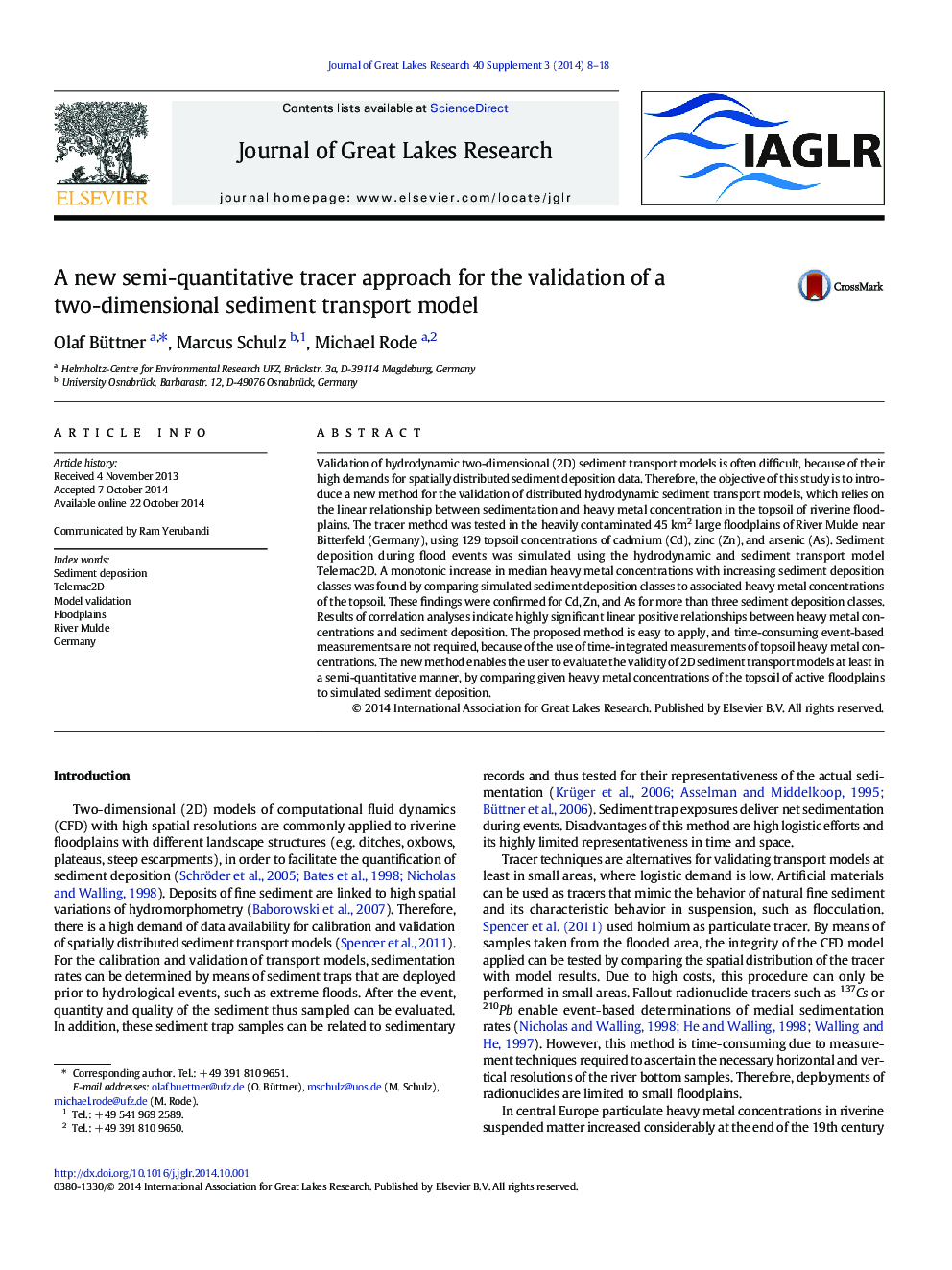| Article ID | Journal | Published Year | Pages | File Type |
|---|---|---|---|---|
| 4398333 | Journal of Great Lakes Research | 2014 | 11 Pages |
Abstract
Validation of hydrodynamic two-dimensional (2D) sediment transport models is often difficult, because of their high demands for spatially distributed sediment deposition data. Therefore, the objective of this study is to introduce a new method for the validation of distributed hydrodynamic sediment transport models, which relies on the linear relationship between sedimentation and heavy metal concentration in the topsoil of riverine floodplains. The tracer method was tested in the heavily contaminated 45Â km2 large floodplains of River Mulde near Bitterfeld (Germany), using 129 topsoil concentrations of cadmium (Cd), zinc (Zn), and arsenic (As). Sediment deposition during flood events was simulated using the hydrodynamic and sediment transport model Telemac2D. A monotonic increase in median heavy metal concentrations with increasing sediment deposition classes was found by comparing simulated sediment deposition classes to associated heavy metal concentrations of the topsoil. These findings were confirmed for Cd, Zn, and As for more than three sediment deposition classes. Results of correlation analyses indicate highly significant linear positive relationships between heavy metal concentrations and sediment deposition. The proposed method is easy to apply, and time-consuming event-based measurements are not required, because of the use of time-integrated measurements of topsoil heavy metal concentrations. The new method enables the user to evaluate the validity of 2D sediment transport models at least in a semi-quantitative manner, by comparing given heavy metal concentrations of the topsoil of active floodplains to simulated sediment deposition.
Related Topics
Physical Sciences and Engineering
Earth and Planetary Sciences
Earth and Planetary Sciences (General)
Authors
Olaf Büttner, Marcus Schulz, Michael Rode,
